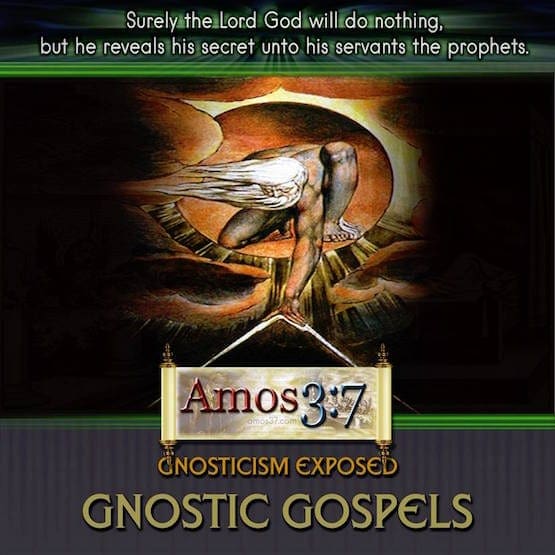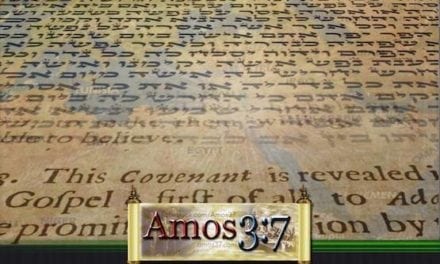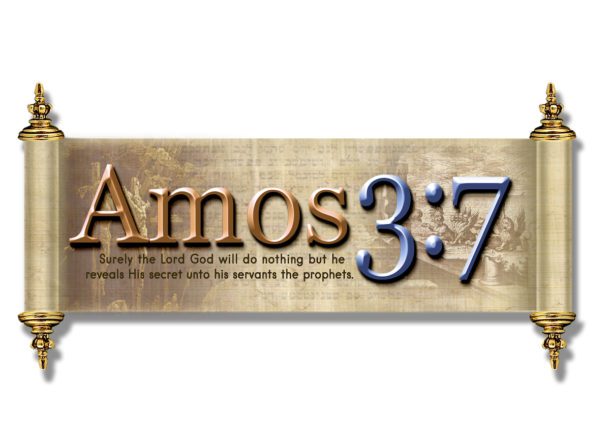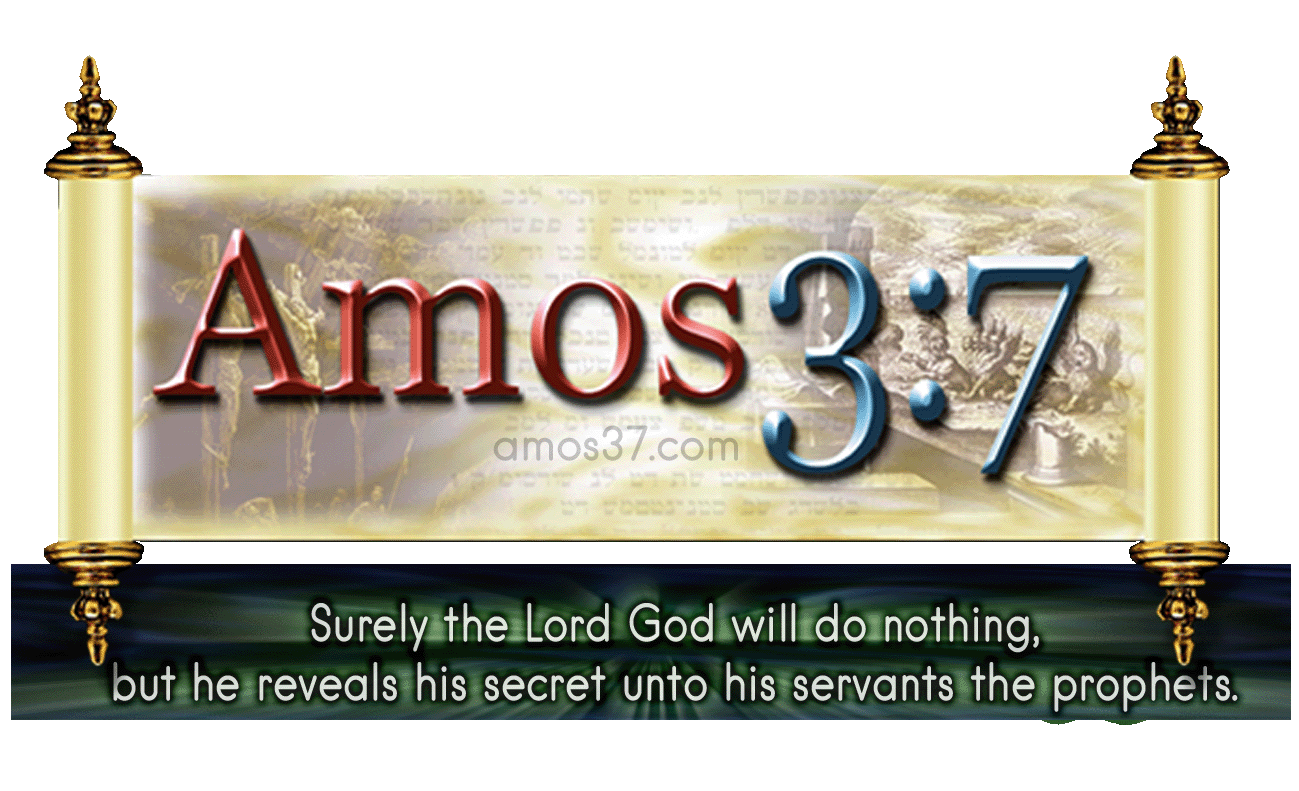Thankfully, the early church fathers were nearly unanimous in recognizing the Gnostic gospels as promoting false teachings about virtually every key Christian doctrine. There are countless contradictions between the Gnostic gospels and the true Gospels of Matthew, Mark, Luke, and John. The Gnostic gospels can be a good source for the study of early Christian heresies, but they should be rejected outright as not belonging in the Bible and not representing the genuine Christian faith.
And every spirit that confesseth not that Jesus Christ is come in the flesh is not of God: and this is that [spirit] of antichrist, whereof ye have heard that it should come; and even now already is it in the world. 1 John 4:3
Gnosticism by Dr. Norman Geisler
The Gnostics followed a variety of religious movements that stressed gnosis or knowledge, especially of one’s origins. Cosmological dualism was also a feature of the system—opposed spiritual worlds of good and evil. The material world was aligned with the dark world of evil.
Gnosticism Exposed in Hollywood as Dualism in a Updside Down World
Dualism: The Illuminati Religion – In this ‘Conspiracy Theory of Everything’ type exposé on the Illuminati, Gnosticism and Luciferian beliefs I reveal for the first time the hidden and zealously guarded religious beliefs of the Elites. I begin by outlining their basic beliefs about Dualism and the Great Work and what all these doctrines entail.
I then attempt to prove my outlandish assertions by reviewing four of the most Gnostic entrenched pieces of content available (The Matrix, Tron Legacy, Lego Movie & ES4: Shivering Isles). I also offer a large list of other similar content. After this I examine occult symbolism and cultural trends showing that the same doctrines appear where ever the Illuminati have any influence.
Some examples of topics covered are: Masonic Symbolism, Baphomet, 9/11, The Emerald Tablet, LGBT, Evolution, Chimeras, Trans-humanism, Race Wars, Prince ect. ect. In the final section of the video I go about refuting the many beliefs revealed in the first two sections, as well as offering a superior alternative to those beliefs which is found in the Gospel of Christ contained in the Word of God, the Bible. -By Theophilus Most Excellent on YouTube
No one is certain of the origins of Gnosticism. Some believe it was rooted in a heretical group within Judaism. Supporters of this theory cite The Apocalypse of Adam and The Paraphrase of Shem as early Gnostic documents revealing Jewish origins. Others give it a Christian context. An incipient form may have infiltrated the church in Colosse. Or it may have had a totally pagan root. During the second through the fourth centuries, it was addressed as a major threat by such church fathers as Augustine, Justin Martyr, Irenaeus, Clement of Alexandria, Tertullian, and Origen.
Early Sources for Gnostics
Irenaeus’s book Against Heresies provides an extensive treatment of what Gnostics believed. Three Coptic Gnostic codices were published. Two were discovered in Nag Hammadi, Egypt in 1945. Codex Askewianus contains Pistis Sophia and Codex Brucianus contains The Book of Jeu. Best known as the Nag Hammadi documents is the Gospel of Thomas. The third work from this period, Codex Berolinensis, was found elsewhere and published in 1955. It contains a Gospel of Mary [Magdalene], a Sophia of Jesus, Acts of Peter, and an Apocryphon of John. The first translation of a tractate, The Gospel of Truth, appeared in 1956, and a translation of fifty-one treatises, including Gospel of Thomas, appeared in 1977.
Leaders
The early fathers of the church held that Gnosticism had first-century roots and that Simon the Sorcerer of Samaria (Acts 8) was the first Gnostic. According to church fathers, Simon practiced magic, claimed to be divine, and taught that his companion, a former prostitute, was reincarnated Helen of Troy. Hippolytus (d. 236) attributed the Apophasis Megale to Simon. Simon’s disciple, a former Samaritan named Menander, who taught in Syrian Antioch near the end of the first century, taught that those who believed in him would not die. That claim was nullified when he died.
Hollywood’s Pleasantville’s Gnostic Twist
At the beginning of the second century, Saturninus (Satornilos) asserted that the incorporeal Christ was the redeemer denying that Christ was really incarnated in human flesh. This belief is shared with docetism. In this period Cerinthus of Asia Minor was teaching adoptionism, the heresy that Jesus was merely a man upon whom Christ descended at his baptism. Since Christ could not die, he departed from Jesus before his crucifixion. Basilides of Egypt was called both a dualist by Irenaeus and a Monist by Hippolytus.
Gnostic Inversion of The Truth
One of the more controversial, though atypical, Gnostics was Marcion of Pontus. He believed that the God of the Old Testament was different from the God of the New Testament and that the canon of Scripture included only a truncated version of Luke and ten of Paul’s Epistles (all but the pastoral Epistles). His views were severely attacked by Tertullian (ca. 160s—ca. 215). Marcion became a stimulus for the early church to officially define the limits of the canon.
Valentinus of Alexandria was another prominent Gnostic. He came to Rome in 140 and taught that there were a series of divine emanations. He divided humanity into three classes: (1) Hylics or unbelievers, who were immersed in material and fleshly nature; (2) psychics or common Christians, who lived by faith and pneumatics; and (3) spiritual Gnostics. His followers included Ptolemaeus, Heracleon, Theodotus, and Marcus. Heracleon’s interpretation of John is the first known New Testament commentary.
Gnostic-like beliefs persisted into the fourth century. Among the late manifestations was Manichaeism, a dualistic cult that trapped Augustine in his pre-Christian life. Against it he wrote many treatises, which are collected in The Anti-Manichaean Writings in the Ante-Nicene Fathers.
Gnostic Teachings
Since Gnosticism lacked a common authority, it encompassed a variety of beliefs. Central to many, if not most, were:
1. a cosmic dualism between spirit and matter, good and evil;
2. a distinction between a finite Old Testament God, Yahweh, who was equated with Plato’s Demiurge or Craftsman, and the transcendent God of the New Testament;
3. view of creation as resulting from the fall of Sophia (Wisdom);
4. identification of matter as evil;
5. belief that most people are ignorant of their origins and condition;
6. identification of sparks of divinity that are encapsulated in certain spiritual individuals;
7. faith in a docetic Redeemer, who was not truly human and did not die on the cross. This Redeemer brought salvation in the form of a secret gnosis or knowledge that was communicated by Christ after his resurrection.
V For Vendetta & Satanism Gnostic Theme
8. a goal of escaping the prison of the body, traversing the planetary spheres of hostile demons, and being reunited with God;
9. a salvation based not on faith or works, but upon special knowledge or gnosis of one’s true condition;
10. a mixed view of morality Carpocrates urged his followers to engage in deliberate promiscuity. Epiphanes, his son, taught that licentiousness was God’s law. Most Gnostics, however, took a strongly ascetic view of sexual intercourse and marriage, contending that the creation of woman was the source of evil and procreation of children simply multiplied the number of persons in bondage to the evil material world. Salvation of women depended on their one day becoming men and returning to the conditions of Eden before Eve was created. Oddly enough, women were prominent in many Gnostic sects.
11. interpretation of baptism and the Lord’s supper as spiritual symbols of the gnosis;
12. view of the resurrection as spiritual, not physical. In the Nag Hammadi codices, De Resurrectione affirms that:
Gnostic View on Death and Resurrection
The Saviour swallowed up death… For he laid aside the world that perishes. He changed himself into an incorruptible aeon and raised himself up after he had swallowed up the visible by the invisible, and he gave us the way to immortality…. But if we are made manifest in this world wearing him, we are his beams and we are encompassed by him until our setting, which is our death in this life. We are drawn upward by him like beams by the sun, without being held back by anything. This is the spiritual resurrection that swallows up the psychic together with the fleshly.1
Gnosticism as an organized movement acknowledging its source all but died. The sole surviving remnant is in southwestern Iran. However many Gnostic teachings live on among new agers, existentialists, and Bible critics. The revival of interest in the Gospel of Thomas by the Jesus Seminar is a case in point. There is also a tendency, even among some evangelical scholars, to deny the physical nature of the resurrection. However, Gnosticism lives today in the New Age Movement in an extensive way.
What New Agers Need to Know About The New Age
Evaluation of Early Church Fathers
Gnosticism was thoroughly critiqued by the early church fathers, especially Irenaeus, Tertullian, Augustine, and Origen, though Origen bought into some of their views.
Notes
1 M. Malinine, ed and trans., De Resurrection epistula ad Rheginum (Zurich: Rascher, 1963), p. 45
See What are the Gnostic gospels?
Question: “What are the Gnostic gospels?”
Answer: The Gnostic gospels are writings by early “Christian” Gnostics. After the first century of Christianity, two primary divisions developed – the orthodox and the Gnostics. The orthodox Christians held to books we now have in the Bible and to what is today considered orthodox theology. The Gnostic Christians, if they can truly be described as Christians, held a distinctly different view of the Bible, of Jesus Christ, of salvation, and of virtually every other major Christian doctrine. However, they did not have any writings by the Apostles to give legitimacy to their beliefs.
That is why and how the Gnostic gospels were created. The Gnostics fraudulently attached the names of famous Christians to their writings, such as the gospel of Thomas, the gospel of Philip, the gospel of Mary, etc. The discovery of the Nag Hammadi library in northern Egypt in 1945 represented a major discovery of Gnostic gospels. These Gnostic gospels are often pointed to as supposed “lost books of the Bible.”
So, what are we to make of the Gnostic gospels? Should some or all of them be in the Bible? No, they should not. First, as pointed out above, the Gnostic gospels are forgeries, fraudulently written in the names of the Apostles in order to give them legitimacy in the early church. Thankfully, the early church fathers were nearly unanimous in recognizing the Gnostic gospels as promoting false teachings about virtually every key Christian doctrine. There are countless contradictions between the Gnostic gospels and the true Gospels of Matthew, Mark, Luke, and John. The Gnostic gospels can be a good source for the study of early Christian heresies, but they should be rejected outright as not belonging to the Bible and not representing the genuine Christian faith.
Recommended Resource: The Missing Gospels: Unearthing the Truth Behind Alternative Christianities by Darrell Bock.
Connect with Amos37
Stay up to date with Amos37.com eMail update (Weekly)
Free Resources for the growing Christian.
“But grow in grace, and [in] the knowledge of our Lord and Saviour Jesus Christ. To Him [be] glory both now and for ever. Amen.” 2 Peter 3:18
Blue Letter Bible Free Online Bible & Study Tools & Commentaries
Bible Classes College Level For Free to Enroll Track your progress.
Our Own Free Discipleship Course In Video HD.





















Добрый день.
Выражение”красота спасет мир” хорошо воспринимается с позиции творчества. Если искусство, литература и архитектура, меняя стиль – воздействовали на человека, гармонизируясь с понятиями эпохи (ренессанс, возрождение, барокко),эстетики и времени; то меняя понимание и восприятие исторически сложившихся догм, религиозных таинств и традиций – можно изменить сознание и направить вектор духовного поиска человека (кто Я, куда иду, зачем живу и где моё место). Анализ и ассоциативно-образное мышление хорошо показаны в работах Н, Н, Вашкевича (Утраченная мудрость, Системные языки мозга.). Возьмите к примеру слово голгофа (гора или череп) и связанные с ним ассоциации: гора – вершина, вознесение; череп – символ времени, трансформации. Думаю что приведенные далее аналогии должны вызвать тоже определенные ассоциации и духовное мышление: ХИРАМ, ХИРОН, ХРОН, ХРОНОС, ХОРИВ. Но это не моя тема, я привык работать со снами. Занимаясь НЛО и антигравитацией – научился доверять интуиции и подсознанию, это заставило меня отсеивать научные постулаты и авторитеты, искать нетрадиционный подход и не стандартное мышление, пришлось обратится к Блаватской, контактёрам и экстрасенсам. Выйдя за рамки рационального мышления (на метод аналогии), случайно взглянул на Библию с позиции метафизики и интуитивного мышления. Для точности анализа синтезировал три источника (раз-случайность, два-совпадение, три-ситема; подобный способ обработки информации применяется авиацией при поиске подводных лодок, где из трех величин вероятного положения (геометрически это выражается эллипсами) строят параболу). В результате получил шок и узнал, что Библия это великое наследие Духовных цивилизаций ( в закодированном виде), передавших (через время), знания (об устройстве земли, космоса, невидимого мира и предания белой расы), на что есть намёк-указание звучащее как выражение:” ибо где труп (анализ), там соберутся орлы (будет духовное мышление и ясновидение)” (Мат.24:28).
О себе: родился 08.09.1957 в Мариуполе, в 1979 закончил Луганское высшее военное авиационное училище штурманов, с 1975 по 1995 служил в вооруженных силах авиации и флота на лётной, штабной и технической должностях. В настоящее время работаю в КИП на молокозаводе г. Мариуполя, занимаюсь исследованием и самообразованием по вопросам дешифровки Библии и созданию гравитационного двигателя на принципе третьей производной (асимметричного магнитного поля), способной создать анизотропию пространства. “Ковчег завета” написал в 1998г., десять лет редактировал, вкладывал свою энергетику в чувствование темы, чтобы не стимулировать новую секту или религию. Имею одну публикацию (www.gazetadrevo.ru №7 2008г) в фонде академика Петрова и рецензию доктора философских наук, профессора Мариупольского гуманитарного университета. В апреле 2010г эзотерики выделили страничку в интернете с моей работой ( Краснов Олег./Ковчег завета.). С декабря 2009г поставил интернет, ищу единомышленников. Знаю что у меня будут четыре ученика и одна ученица. Мне удалось снять четыре печати (из семи которыми опечатана Библия), вижу как можно снять пятую и шестую. Для исключения ошибок нужно как минимум два мистических источника, помогите опубликовать. Публикация нужна для выхода на тайные общества, которые хранят эзотерическую информацию, ключи толкования и не знают что с ними делать. Работа написана на уровне планетарного посвящения. Ден Браун – отдыхает. Конец света отменяется. Квантовый переход это преображение нашего МЫШЛЕНИЯ, или обращение к внутренему миру человека. и почему бы НОВОЙ РЕФОРМАЦИИ не пойти с РОССИИ.
No prophet in his own country !
Предложенное толкование отличается от традиционного оно ослепляет, но нет другова решения на рациональном пути к свет. По ведам слово (ВЕ)-(РА) означает знание, а верующий это ведающий, (ВЕ)дущий к свету, знанию, солнцу (РА). Учёл замечания, сделал акцент на ГИПОТЕЗАХ и толковании числа Христа 318 как СИМВОЛА. Никто не сможет возразить, не научный люд, не хранители религиозных традиций.. Попробуйте сами по другому объяснить что не понято 2010 лет (тайна числа 666 в новом завете) или 3128 лет (сотворение земли из воды). Предложенное исследование приводит к изменённому состоянию сознания, выполняет информационный синтез, заставляет задуматься о реформации христианства, хорошо написано, но попадает в руки не к тем людям а ПИПЛАМ (PEOPLE), и объяснить не русскоговорящим что такое метафора невозможно.Ну как можно англосаксам объяснить выражение “спал без задних ног”. А всё творческое в принципе интуитивное, иррациональное и во многом символическое.
Возможно существует и информационная блокада и кому то не выгодно чтобы проснулась генная память или возможность воспринимать образную информацию своим сердцем или через чакру солнечного сплетения. А ведь слово солнечное сплетение как и слово богатырь не встречается и не переводиться ни в одном языке мира. Да и слово БОГА-ТЫРЬ (хотя и тюркское) но в русском языке оно составное и как говорит Задорнов означает – брать, тырить у Бога (как это делают внучата) т.е. быть ВНУКОМ БОГА а не РАБОМ БОЖИМ как учит церковь. Да и славянские Веды говорят что мы внуки Даж Бога…
О числе Христа и роли России (Руси), во времена перестройки, говорит наш современник стигматик Джорджио Бонджовани (Италия), а знаменитый мистик и ясновидящий Э. Кейси указывал, что из России пойдет новое религиозное учение. Да получилось трудно воспринимаемое изложение, но а как можно по другому изложить то что воспринимается подсознанием.
Читать мою работу лучше в несколько подходов, по количеству глав… И ещё, она сложна потому что одновременно работает с иррациональным и рациональными знаниями и понятиями, подобно комплексным числам. Да я и сам читая две части вхожу в измененное состояние восприятия реальности и для того чтобы понять третью часть делаю перерыв, ну а четвертая часть это филосовско-эзотерическое или креативное мышление и показывается направление и путь поиска Истины. За ортографию и орфографию приношу извинения, могут быть ошибки. Когда излагаеш измененное состояние сознания (описываешь рациональным языком образное мышление), то находишься в отключке и следишь за мыслью, а не ортографией. Ошибки всегда можно исправить, мысли доработать, а обратить внимание на образное мышление не так то легко. Первыми к звездам придут мечтатели и ученые, люди способные охватить небесное, бесконечное, и даже понять физический смысл времени. Не просто в Новом Завете сказано: Бог есть – не Бог мертвых, а Бог живых. Разве ВЫ не знаете что ВЫ БОГИ и будете судить Ангелов.
Ищущие научную истину уже знают, что академические физические и химические знания базируются на ложных теориях, поэтому рождение новых фундаментальных знаний невозможно в головах носителей таких теорий. Согласно Оригену пророки и апостолы описывают небесные сокровища, рассказывая о некоторых делах человеческих, мудро соединяя историческую истину, рассказ с аллегорическим вымыслом.
Кстати мои мысли хорошо воспринимают философы, изобретатели и люди с физико-математическим мышлением. Сделал несколько вариантов, конкретизировал четвертое измерение и понятие времени, сослался на статью о Болотове и Плыкине.
Пришлите E-mail вышлю.
Здоровья, понимания, приятных снов, до свидания.
Олег.